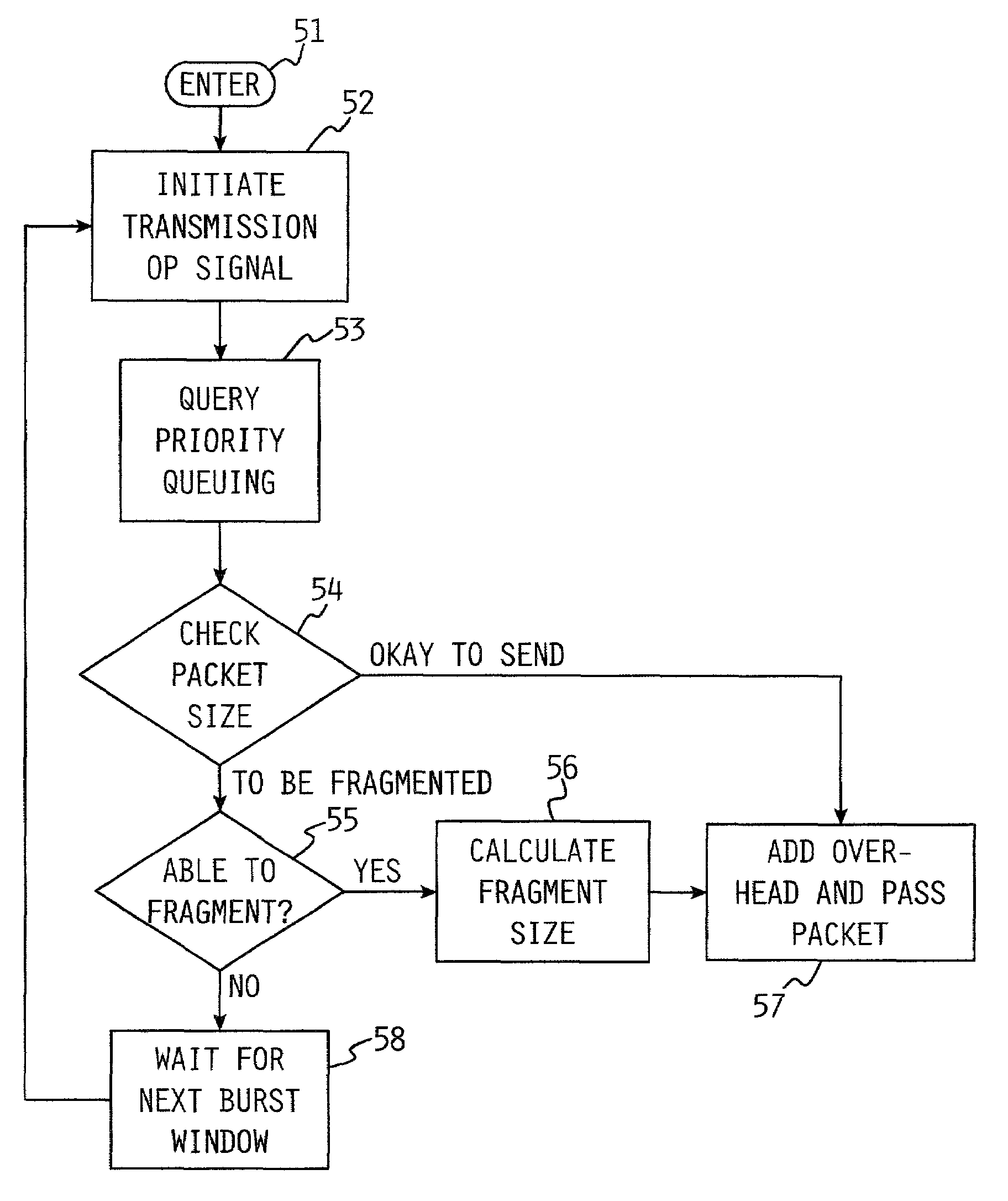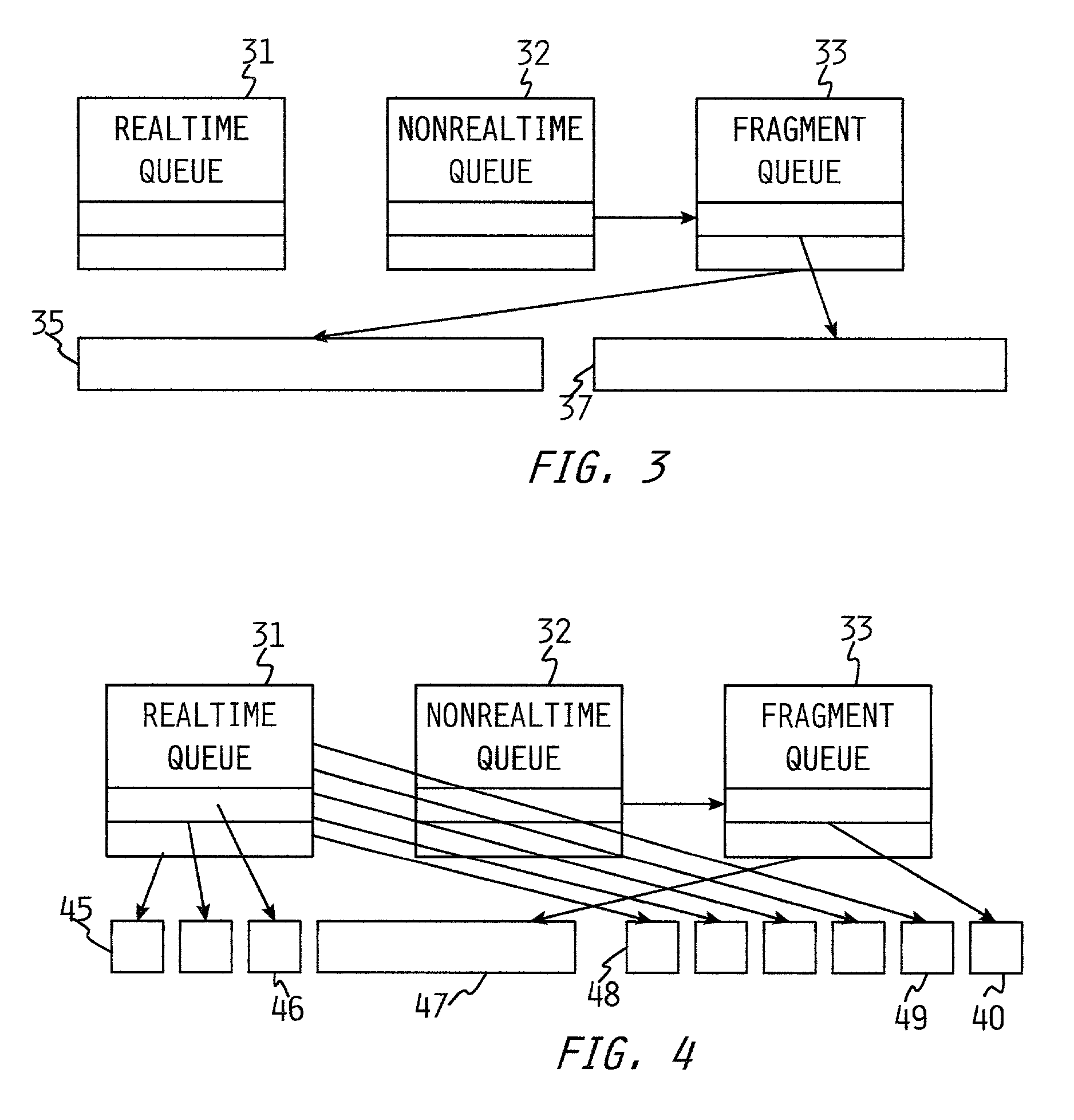Optimizing fragment sizes in frame relay networks
a frame relay network and fragmentation technology, applied in data switching networks, frequency-division multiplexes, instruments, etc., can solve the problems of not dynamically setting the fragment size to maximize bandwidth utilization, and conventional methods fail to take advantage of the full bandwidth of a system, so as to reduce the amount of overhead associated, reduce the delay in real-time traffic, and minimize the delay in receipt
- Summary
- Abstract
- Description
- Claims
- Application Information
AI Technical Summary
Benefits of technology
Problems solved by technology
Method used
Image
Examples
Embodiment Construction
[0014]There is an industry-wide de facto standard for fragmenting and reassembling data frames transmitted and received over circuits in a frame relay network. (FRF.12 Frame Relay Forum implementation agreement is an example.) Fragmentation is necessary when a typically low speed serial link is used to carry both realtime and non-realtime data concurrently. Examples of data types include VoFR (Voice over Frame Relay), VoIP (Voice over IP) traffic, and IP FTP (File Transfer Protocol) transactions.
[0015]To minimize delay of realtime traffic, which usually comprises many small data packets, large data packets are fragmented into smaller packets. Then the realtime packets are interleaved between the fragments of the data frame. This reduces delays in the receipt of the realtime traffic. The burden is on the frame relay layer in the receiving device to reassemble the fragmented packets and forward them to the appropriate higher layer. The current industry standard calls for using fixed d...
PUM
 Login to View More
Login to View More Abstract
Description
Claims
Application Information
 Login to View More
Login to View More - R&D
- Intellectual Property
- Life Sciences
- Materials
- Tech Scout
- Unparalleled Data Quality
- Higher Quality Content
- 60% Fewer Hallucinations
Browse by: Latest US Patents, China's latest patents, Technical Efficacy Thesaurus, Application Domain, Technology Topic, Popular Technical Reports.
© 2025 PatSnap. All rights reserved.Legal|Privacy policy|Modern Slavery Act Transparency Statement|Sitemap|About US| Contact US: help@patsnap.com



